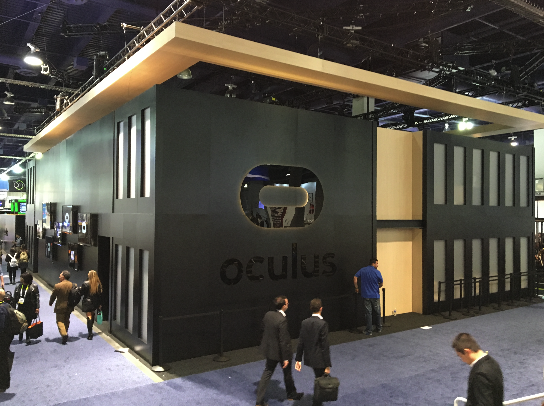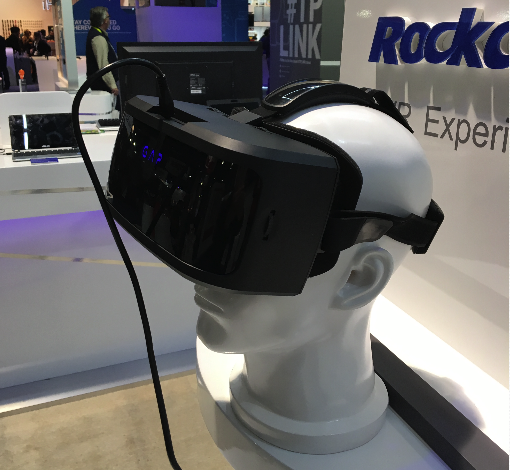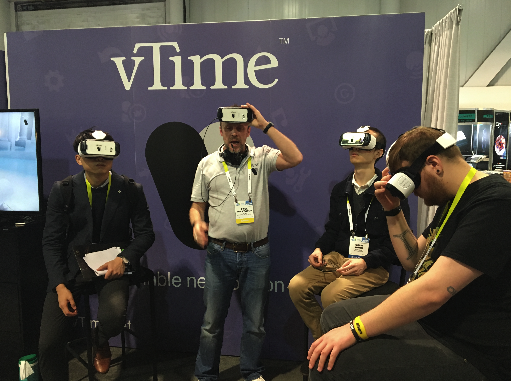Oculus had a remarkable and rather large footprint at CES, filled with a monolith-like structure on the show floor in South Hall. It created a buzz among attendees that is seldom seen at a show heavily laden with “savvy Geeks”, complete with 90 minute wait times to get a glimpse at the new consumer version Rift. The new version will ship from Oculus VR at the end of March for $600 with pre-orders starting on Wednesday January 6. But the full cost will also need to include some pretty powerful hardware to drive one of the 20 plus sophisticated VR games that you may want to play on your new headset. Oculus VR included a list of recommended specs that according to the company will include:
- Microprocessor: Intel i5-4590 equivalent or greater
- Graphics: NVIDIA GTX 970 / AMD 290 equivalent or greater,
- Memory: 8GB+ RAM
- Connections: Compatible HDMI 1.3 video output plus 2x USB 3.0 ports
- OS: Windows 7 SP1 or newer
After taking those requirements into account, even home-built systems will cost upwards of $800 according to Gizmag.com.
As expected, that’s a fairly powerful rig you’ll need to buy or build, though still far cheaper than some traditional game systems, that can sell at four times that number for high-end gaming PCs or laptops.
 Ant VR at CES 2016, Source: Sechrist
Ant VR at CES 2016, Source: Sechrist Oculus Monolith booth in the South Hall at CES 2016 had up to 90-minute wait times, Source: Sechrist
Oculus Monolith booth in the South Hall at CES 2016 had up to 90-minute wait times, Source: Sechrist
Other VR technologies spotted at CES included, Ant VR Cyclops (prototype) that will sell for $240 according to the China based company. It’s a Samsung Gear-like headset that uses a smartphone to provide the display and power the video content feed. Like HTC’s Vive, it was demoed in a 10 ft (3m) square “walking around” environment tethered to a tracking system using IR. Few were allowed in to try out the device, so we had no luck in getting a try of this technology.
 Rockchip prototype proof of concept VR headset shown at CES 2016, Source: SechristChina Chip maker Rockchip had several VR prototypes in their CES booth, mostly based on their popular RK3288 processor, a 1.8GHz Quad-core A17 (ARM-based chip). The technology was shown in a proof of concept VR goggles prototype using a 5″ HD LCD display and support for most game platforms via HDMI. This included 3D support with VR rendering, the company said.
Rockchip prototype proof of concept VR headset shown at CES 2016, Source: SechristChina Chip maker Rockchip had several VR prototypes in their CES booth, mostly based on their popular RK3288 processor, a 1.8GHz Quad-core A17 (ARM-based chip). The technology was shown in a proof of concept VR goggles prototype using a 5″ HD LCD display and support for most game platforms via HDMI. This included 3D support with VR rendering, the company said.
Two other VR companies we found at CES included vTime VR, and LeTV. The former claims to be a mobile VR social network that includes others in the experience available for the Gear VR device from Samsung. Others in the game play can be searched for by name and users request contact for a game match. The approach is much like the Oculus Social component allowing for chat room and avatar interaction. This is just the tip of the iceberg on extending VR to include others, an ultimate goal for gaming, and — well, everything else in VR going forward.
 vTime empowers social networking on the Gear VR at CES 2016, Source: SechristLeTV offers its LeVRCool1 entry level solution that is customized for the Le brand Smartphones (working much like the Samsung Gear VR with Android software). It offers a FOV of up to 90-degrees. Software includes geometric distortion correction and a low latency of less than 20ms.
vTime empowers social networking on the Gear VR at CES 2016, Source: SechristLeTV offers its LeVRCool1 entry level solution that is customized for the Le brand Smartphones (working much like the Samsung Gear VR with Android software). It offers a FOV of up to 90-degrees. Software includes geometric distortion correction and a low latency of less than 20ms.
On the (non-goggle) projection based VR side, a France-based company called Scale-1 showed its Scalee VR that claims to be the next thing in VR with a “no headset” option. This is a projected wall display device in 1:1 scale, that tracks the user’s movements in a real space (CAVE-like only shown on one wall) with game play that wants to be more like the “Holodeck” in StarTrek than a head-mounted virtual experience. The group showed Future Runner a battle/race game played in front of the displayed image. We probably have some way to go before this catches on, but we agree, it is the direction of the future.

